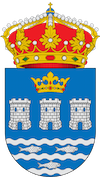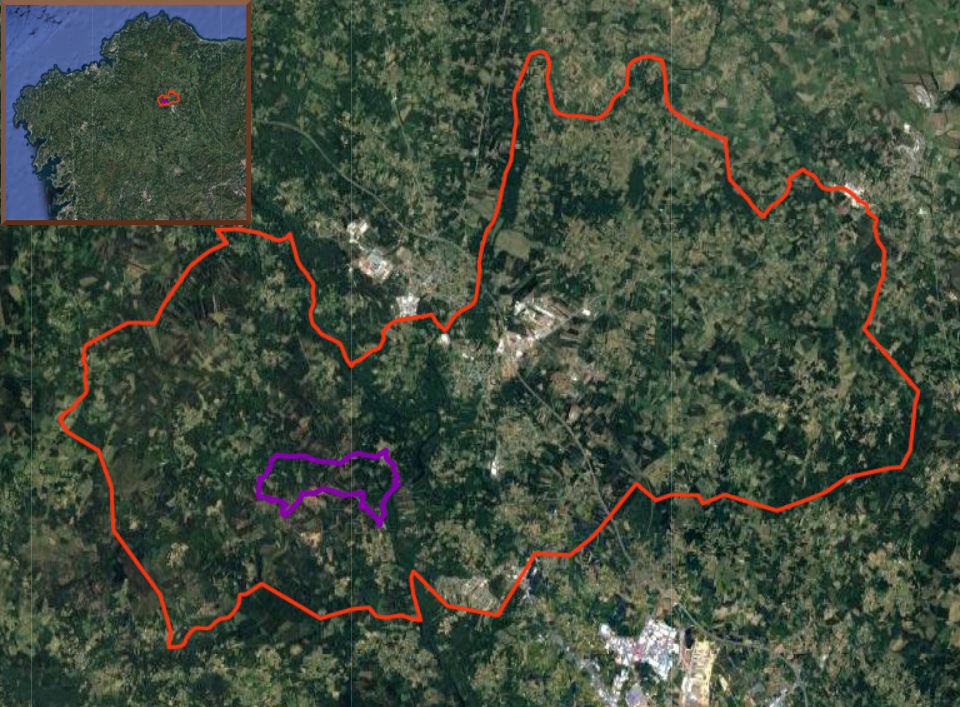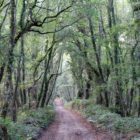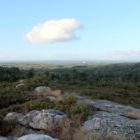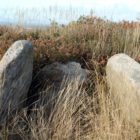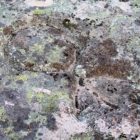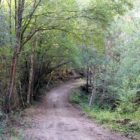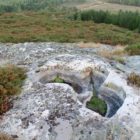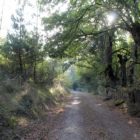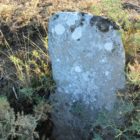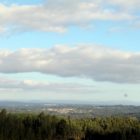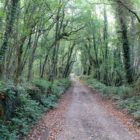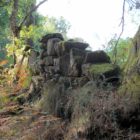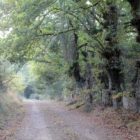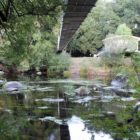DESCRIPTION:
The town hall of Outeiro de Rei is well known in archaeological history for the abundance of tumular deposits as well as the rest of Terra Chá as it is identified with a natural corridor that allows the connection between the highlands of the Sierras Northern to the N and eastern to the E with the Meridian Dorsal to the W and the lowlands of the depressions of Sarria and Monforte to the S, facilitating the transfer of people, ideas and goods both throughout Prehistory and in historical times.We highlight the groups of tumular concentrations in Monte de Matela, Gándaras de Outeiro, Roza das Aveas or this set of the Acevedo Cordal, among the boundaries of the parish of Martul-Aspay-Stop, with interesting findings of material and an interesting typology of cists and dolmenic chambers.This route allows a closed route through a tumular complex very representative of the town hall of Outeiro de Rei.Group 1: Tumules grouped to the path behind Pascuais take us to Coto de Province which has historical engravings such as Galba, territorial milestone of separation of mountains in common hand, or engravings linked to the tumular phenomenon in the outcrop of Penas Serrated. From the mounds of Pascuais, greatly altered by human actions, especially of forest repopulations, with very low tumular masses we can ascend to the chambers of the mounds of Coto Province-Pico das Mallas with mounds that has important masses tumulars in diameter and height.Group 2: The mounds of the Acebedo Cordal extend from A Roza das Presas, to a higher height, which by a transit road incorporate new mounds in Trala Seara and in the Acebedo Dividetor itself to descend through the Rozas da Cal and Os Carrís to the lower part that the River Minho would pass through the many existing insands.Highlight mounds such as Pena Dereita (GA27039009) or that of the Divisoria de Acebedo (GA27039112) that for their height dimensions, tumular mass and camera typology are examples of maximum interest.Along this route we will not only be able to see the megalithic necropolis of O Acevedo, which gives name to the route, but we will also find different medorras, mounds, petroglyphs… most catalogued and even two of them, the Medorra 1 of Acevedo and the Petroglifo de Pena Serrada, have the consideration of Good of Cultural Interest.The mamals are funerary mounds characteristic of the Neolithic northwest of the Iberian peninsula, they are artificial accumulations of earth or stones, usually circular in shape, which occur abruptly on the ground and contain one or more Burials. Normally inside is a stone structure known as dolmen or anta. It is common for them to have a depression at the top known as rape cone, or what is the same remnant of some illegal excavation in search of precious materials or more commonly to take advantage of the stones. They are found in many places where there was megalithic culture.

